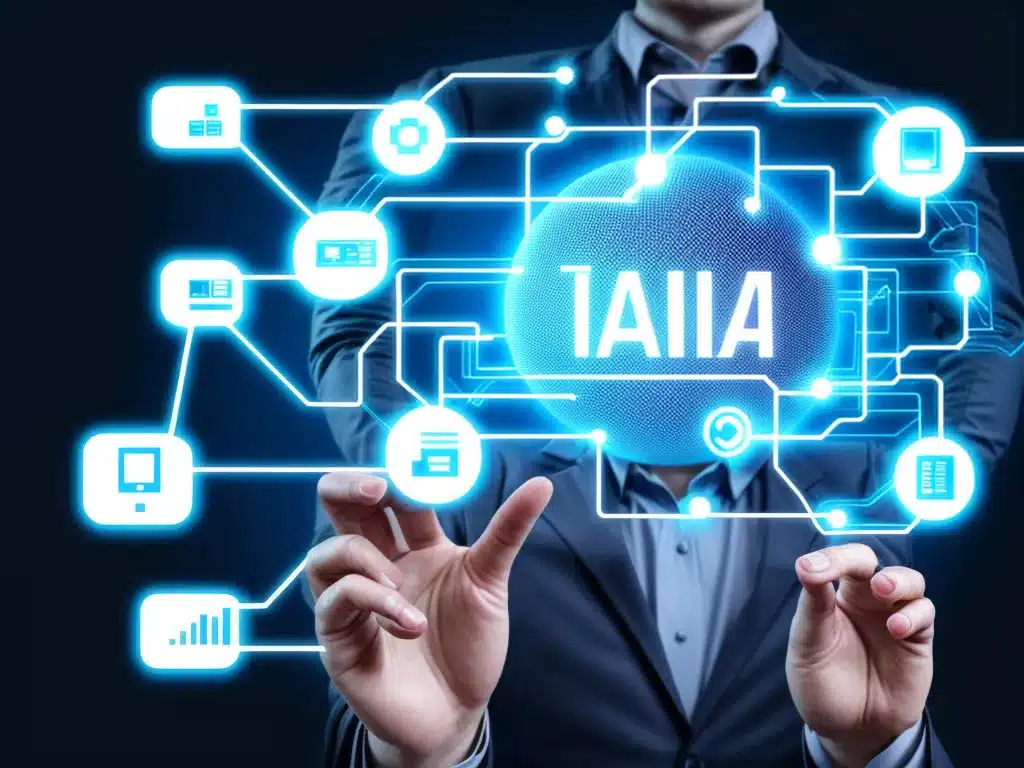The Internet of Things (IoT) generates massive amounts of data from connected devices and sensors. This data is often underutilized because it is unstructured and difficult to analyze. Artificial intelligence (AI) offers a solution by making IoT data actionable.
How AI Extracts Value from IoT Data
IoT data comes in many formats from many different sources. AI algorithms can extract value from this data through:
Natural Language Processing
Natural language processing (NLP) techniques allow AI systems to understand unstructured text data from sources like social media, customer reviews, support tickets, and documentation.
-
NLP can detect sentiment, identify keywords, and extract entities to understand text data.
-
This allows businesses to monitor brand mentions, analyze customer feedback, and automate processes like ticket routing and knowledge base creation.
Image and Video Analysis
AI can also process pixel data from images, video, and other multimedia IoT sources using computer vision.
-
Object detection, facial recognition, and scene understanding techniques can extract insights from visual data.
-
Retailers can analyze in-store traffic patterns. Manufacturers can spot defects or anomalies on production lines.
Speech Recognition
Speech recognition AI converts human speech from call center recordings, voice assistants, and other audio sources into machine readable text.
-
The text can then be analyzed for sentiment, intent, and meaning like any other text data.
-
This allows call centers to automatically categorize and route calls for more efficient customer service.
Predictive Analytics
AI excels at finding patterns in large volumes of data. Machine learning algorithms can process diverse IoT data to make predictions.
-
Predictive maintenance analyzes sensor data to forecast equipment failures before they happen.
-
Predictive inventory optimization uses IoT signals like foot traffic to plan better inventory levels.
-
Predictive analytics on IoT data improves uptime, reduces waste, and boosts efficiency.
Real World Applications of AI-Driven IoT
Here are some examples of AI adding value to real world IoT deployments:
Retail Inventory Management
A retail chain uses sensors to track inventory on shelves. Computer vision cameras also monitor foot traffic patterns.
-
AI analyzes this data in real time to optimize staffing, promotions, and supply chain.
-
Out of stocks are reduced by 65% and sales are increased by 8% over 6 months.
Smart Agriculture
A farm uses IoT sensors to monitor soil moisture, crop growth, equipment status, and weather conditions.
-
AI models track sensor data to generate insights on irrigation, fertilization, and harvesting.
-
Crop yields improve by 12% while water usage drops by 20%.
Predictive Maintenance
An industrial plant monitors production line equipment with vibration, temperature, and pressure sensors.
-
AI detects patterns signalling impending failures so maintenance can be scheduled proactively.
-
Unplanned downtime is reduced by 30%, saving over $2 million per year.
Call Center Optimization
A call center records customer calls along with data on wait times, abandonment rates and agent workload.
-
AI discovers staffing levels and procedures that maximize service levels and customer satisfaction.
-
Key performance indicators improve – first call resolution by 15%, speed of answer by 40%.
Challenges in Making IoT Data Actionable
While promising, applying AI to IoT has difficulties:
- IoT data is often siloed in separate systems and formats. Data integration is needed to feed it to AI.
- Labeling IoT data for AI training can require substantial manual effort and domain expertise.
- IoT devices have limited computing power. Running AI models on device may require optimization for low latency.
- Data privacy and governance issues arise with analyzing personal or sensitive IoT data using AI.
- AI model decisions need to be explainable to users instead of black boxes.
The Future of AI and IoT
As IoT expands, and devices become even more integrated and ubiquitous, applying AI will become even more impactful. Future opportunities include:
- Edge AI – Running AI models directly on local devices instead of the cloud reduces latency and preserves privacy.
- Predictive maintenance – Combining AI and IoT can minimize equipment downtime across many industries.
- Conversational interfaces – Interacting with IoT devices via voice assistants and chatbots will become commonplace.
- Immersive experiences – VR, AR and other human-centric AI innovations will mesh with ubiquitous ambient IoT sensors and displays.
With thoughtful implementation, AI and IoT together empower businesses to extract maximum value from connected devices while overcoming data overload. The future where an AI assistant proactively guides us through a fully sensor-enhanced environment is closer than ever.













